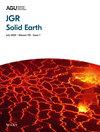Biogenic magnetite crystals produced by magnetotactic bacteria (MTB) and associated magnetofossils in sediments are characterized by variable morphologies, grain sizes, and chain structures. Magnetofossils are widely used in paleomagnetic and paleoenvironmental studies, but the complex magnetofossil shapes and particle arrangements significantly affect magnetic properties, hampering their magnetic detection and proxy interpretation. Here we perform coupled experimental and micromagnetic modeling analyses of typical magnetofossil-rich sediments, where the effects of magnetofossil crystal forms and microstructures on magnetic properties can be quantitatively separated. Since the in situ magnetofossil chain structures in sediments remain poorly known, we compare results from magnetic measurements and micromagnetic simulations based on realistic magnetofossil shapes and grain size distributions. Our results suggest that bullet-shaped magnetofossils certainly contribute to the biogenic hard (BH) coercivity component with a minor contribution from elongated prismatic particles, and collapsed equidimensional grains to the biogenic soft (BS) component. Micromagnetic simulations with different collapse models of bullet-shaped magnetofossils produce variable FORC (first-order reversal curve) central-ridge contributions with similar coercivity distributions. Sensitivity test suggests that samples containing different forms of magnetofossils can produce the BH coercivity component if the proportion of the bullet-shaped particles is more than ∼2%. Magnetofossil assemblages with a higher proportion of bullet-shaped particles have higher coercivities, squareness ratios, and larger BH contents. Our data shed new light on understanding the origin of magnetofossil coercivity components and the in situ magnetofossil microstructures in sediments, which is widely useful for interpreting magnetofossil proxy signals in geological records.


